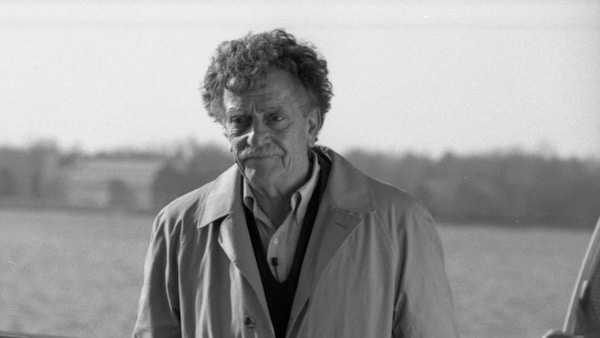Kurt Vonnegut: Unstuck in Time
Written by Robert Weide
Directed by Robert Weide, Don Argott
In cinemas
“Listen, Billy Pilgrim has come unstuck in time,” wrote Kurt Vonnegut in his most famous novel, Slaughterhouse-Five.
Vonnegut, like the novel’s Billy Pilgrim, witnessed the effects of the Allied fire-bombing of Dresden in World War II—a massacre and a war crime. In the novel, Pilgrim mentally flees the terrible memories by fantasising about extraterrestrial time travel, but can’t stop his mind from straying back to the trauma.
At a critical moment in Slaughterhouse-Five, Vonnegut breaks through in the first person: “That was I. That was me. That was the author of this book.”
Being “unstuck in time” is an apt metaphor for post-traumatic stress syndrome and reflects Vonnegut’s experience. His coping mechanism was the mordant humour that he used in person and in his many literary works — including 14 novels — to deflect attention from his sorrow.
It allowed him to explore deep issues under a cover of apparent flippancy. It won him a mass audience, after decades of struggling to make it as an author.
The documentary shows Vonnegut joking and his desolation as he reflects on his life’s trajectory. It covers his entire personal history, parenting abilities (atrocious), struggle to become a writer, friendships and loneliness.
Slaughterhouse-Five was published just as the U.S. public became aware of the Mỹ Lai massacre in Vietnam. The youthful anti-war movement adopted Vonnegut as one of their own.
In the documentary it is said that, just as people today read Mark Twain to understand 19th century America, future generations will turn to Vonnegut to grasp 20th century U.S. reality. The America these readers will discover is populated by over-consuming, emotionally stunted people maintaining silence about national crimes against humanity.
Slaughterhouse-Five was the point where Vonnegut was propelled from obscurity to celebrity, turning his life on its head. Overnight he went from being a grumpy, barely known writer supported by his loving wife, bent over his typewriter with his seven children rioting outside, to acclaim, divorce and writer’s block.
His children say that they had no idea what was going on inside him until they read his books. Neither of his wives speak for themselves in the movie, so their feelings are unknown.
Filmmaker Robert Weide gained Vonnegut’s approval to make a documentary about him in the 1980s, and the project continued intermittently over the decades until Vonnegut’s death in 2007.
In the process, the two became close friends and Vonnegut gifted Weide many of his personal archives. So, just as Vonnegut’s novels weave disparate elements and timelines, Weide’s documentary is non-linear — unstuck in time as well.
He cuts back and forth between many interviews with Vonnegut’s children and friends to expose different layers of meaning.
The film uses footage of Vonnegut’s public speeches, for which people packed auditoriums to the rafters to listen to. He was hilarious, cynical and scathing about U.S. warmongering.
Weide is the touchstone between the components; the authorial voice holding the narrative together, surveying Vonnegut’s biography and his own part in it.
His film is as much a work of love for a dear friend as a glowing tribute to a great and suffering writer who exposed the core futility of U.S. culture.
[The trailer for Kurt Vonnegut: Unstuck in Time can be seen here.]
